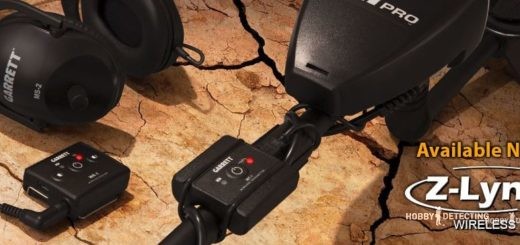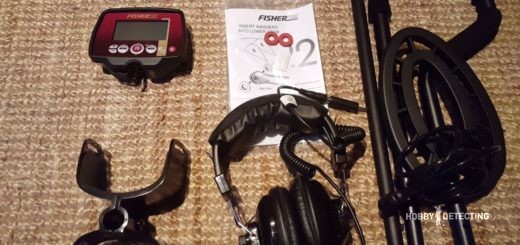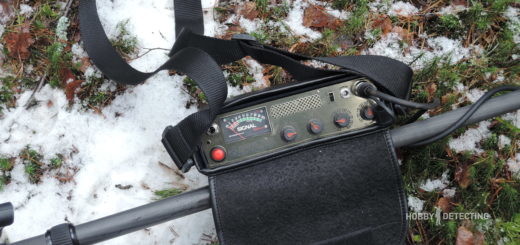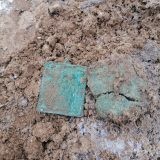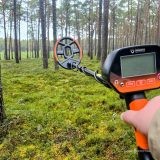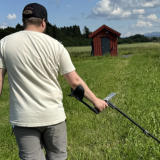Bounty Hunter Land Ranger Pro Review!
The Bounty Hunter Land Ranger Pro metal detector is among the top detectors in the Bounty Hunter Pro series. I have had this detector for some time, and I must say that I had a great time and some nice finds with it!
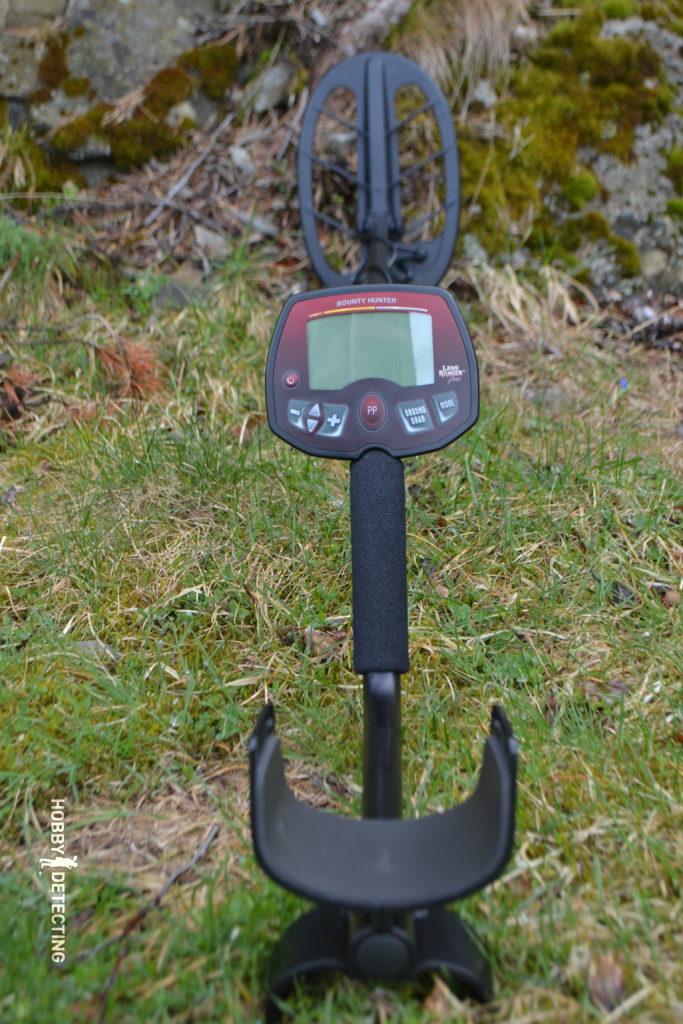
The LRP (which stands for Land Ranger Pro) is usually sold with an 8” coil, or an 11” DD search coil, and I acquired one with the 11” DD coil. Both of these coils are pretty good, but I recommend the 11” one most. Both the coils are waterproof like most other coils. The lower (plastic) part of the rod is also waterproof (But the rest of the detector is not!). The 8” coil gives you a good balance between the detection depth and the sensitivity to different objects. The 11” coil is best for areas with high mineralization, and it gives you more depth. The 11″ coil weighs ca. 130 grams (4.5 ounces) more than the 8″ coil. This detector has almost no learning curve at all, it is very easy to understand it. This is a good detector for starters as well as professionals.
First off, here are some features of the LRP:
Manufacturer: Bounty Hunter (USA)
Year of release: 2014
Technology: VLF
Frequency: 7,69 kHz
VDI / Numerical Target-ID: Yes
Ground balance: Yes
Tones: 4
Adjustable volume: Yes
Pinpoint function: Yes
Batteries: One 9V
Weight: 1,1 kg
Length (min/max): 120-140 cm
Modes
The LRP has 7 different search modes. These modes are to best adapt to various grounds and depends on what you want to find. The different modes are: Coins, Jewelry, Artifacts, 2 Tones, 3 Tones, 4 Tones and the All Metal mode.
Menu-Button
To adjust the settings within a mode, press the menu-button. Things you can change in some settings are: Volume, Sensitivity, Discrimination and other things. Some modes have less settings to customize than others.
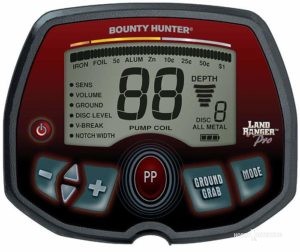
Target ID
Unlike most other detectors in its price class, the LRP has a target ID, which ranges from 1-99. This number supposedly shows the electrical conductivity of the target. For example: higher numbers mean more conductive targets, like silver which shows up at around 90. In addition to the ID indicator, you also have a segment bar on the top of the display screen. The segment bar indicates what the object could possibly be. When I started digging, I usually dug everything, and soon I found out that tabs, my and most other detectorists` enemy, had an ID at around the 30-35 range. The iron was about 0-19 on the digital ID.
Sensitivity
On the LRP it is possible to adjust the sensitivity on the scale from 1 to 10. The higher the sensitivity the greater depth, with more good finds, and also more trash. Notice! Sometimes when you have the sensitivity too high, the detector will start giving false signals.
Four Tone Audio
If the 4-tone mode is selected, the detector will produce 1 of 4 sounds for the detected object: V.C.O., low-tone, medium-tone or high-tone. This feature is very useful, so you don’t have to go and look down on your display all the time.
Notch Discrimination
The LRP also has the function to remove signals with the discrimination feature. You can easily remove object signals like aluminum or bottle corks. In my opinion this is an easy feature to remove junk signals, while there is also a chance that you remove some good signals.
Ground Grab
Different types of grounds and locations have different minerals in the ground, and the signals from these minerals often interfere with the signals of the detected objects. When the detector is adjusted to the soil, you will often get deeper detection range, much less false signals and a more accurate target ID. The LRP has a button which has the function to automatically adjusts to the ground minerals, often called ground. The ground balance setting can be set at a value from 0 to 99.
V-Break
This feature gives you the opportunity to change the audio response of certain objects. It is possible to change the sound of different target IDs. Like for example you can set so all targets from 0 – 40 can give a Low tone. This means that you set the V-break to 40. All objects with the ID 40 or below gives a so-called “low tone”.
Adjustable Volume
This is one of my favorite special features on this detector, and I think it is very useful. I miss this feature on other detectors like the Garrett AT Pro. The volume level can be adjusted from 0 to 10. It both works with a headset, and without.
Depth Indicator
The depth indicator on the LRP indicates the estimated depth on a coin-sized object, but as I have experienced the depth indicator is often wrong.
Battery
The detector will need a single 9-volt Alkaline battery. Usually, you can get 20 to 25 hours of detecting from a normal 9-volt Alkaline. The detector also has a battery indicator bar on the display, which shows you how much energy there is left on the battery.
More specifications
In my opinion the LRP is a pretty lightweight detector, compared with others, as it weighs only 1.1 kg. You can detect with it for hours without getting tired!
The LRP is made In the United States, by the Bounty Hunter company, and it also claims to have a 5 year warranty from Bounty Hunter Metal Detectors.
I have experienced that the detector can be pretty “jumpy” on the signals, which means that it can sometimes have an imprecise target ID. What I have experienced is that id the target ID jumps very much back and forward on the scale, it usually means that the signal object is trash.
The LRP also has the Pinpoint mode, which I find very useful.
Overall, I think that this is one of the best detectors out there for its price, and it offers you much more customization than other detectors in the same price range. I do recommend it especially for beginners, but also for professionals who want a lightweight detector for an all-around purpose.
Want to read more reviews? We collect them all here!



